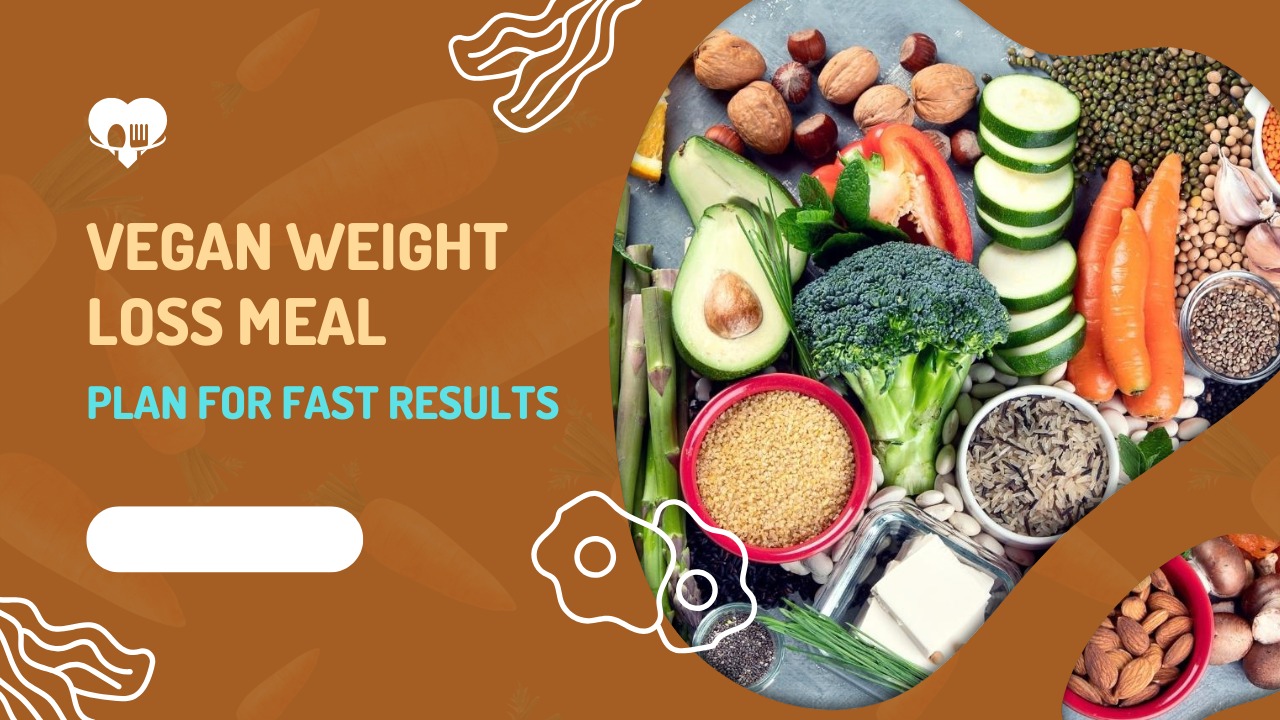The vegan weight loss meal plan is gaining popularity as people realize that plant-based eating can be both effective and sustainable for shedding pounds. By eliminating animal products and focusing on nutrient-dense whole foods, this lifestyle encourages healthier choices that are naturally lower in calories and saturated fats.
A vegan weight loss meal plan emphasizes fruits, vegetables, legumes, whole grains, nuts, and seeds—all rich in fiber, vitamins, and antioxidants. These foods promote satiety, stabilize blood sugar, and support digestion, which are crucial for long-term weight management. Plus, plant-based meals can be incredibly satisfying and diverse, making it easier to stick to the plan.
Whether your goal is to lose a few inches or completely transform your health, a structured vegan weight loss meal plan can help. When paired with regular exercise and proper hydration, it not only aids fat loss but also boosts energy and supports overall wellness.
🥦 Why Choose a Vegan Diet for Weight Loss?
A vegan weight loss meal plan can be a powerful tool for shedding unwanted pounds naturally. Unlike many restrictive diets, plant-based eating focuses on abundance—fruits, vegetables, legumes, and whole grains that are rich in fiber and low in calories. This means you can eat more volume without overeating on calories.
One of the key benefits of a vegan weight loss meal plan is improved digestion. The fiber content in plant-based foods keeps your digestive system moving smoothly, helps control hunger, and stabilizes blood sugar levels. This can significantly reduce cravings and binge-eating tendencies.
Additionally, plant-based meals are typically lower in saturated fats and cholesterol, making them heart-healthy and supportive of long-term wellness. Many who adopt a vegan lifestyle also experience increased energy and clearer skin as added benefits.
Beyond weight loss, a vegan weight loss meal plan supports ethical and environmental values. It’s not just a diet—it’s a lifestyle that aligns health goals with compassion and sustainability. When done right, it’s a nutritious, satisfying, and effective way to reach your ideal weight.
Switching to a vegan diet can be an incredibly effective strategy for weight loss. Here’s why:
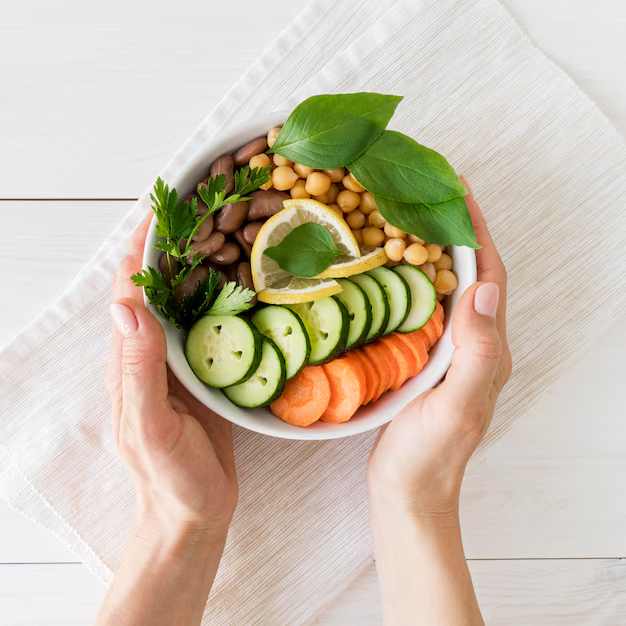
Lower in Calories: Plant-based foods tend to be less calorie-dense than animal-based ones.
Rich in Fiber: High-fiber foods promote satiety and reduce overall calorie intake.
Nutrient-Dense: A vegan diet can be packed with vitamins, minerals, and antioxidants.
Promotes Healthy Gut Microbiome: Fiber fuels good bacteria in your gut, which plays a role in metabolism and weight regulation.
🌿 Top Tips for an Effective Vegan Weight Loss Meal Plan
Focus on Whole Foods, Not Vegan Junk Food
When following a vegan weight loss meal plan, it’s important to remember that not all vegan foods are healthy. Many processed vegan snacks, frozen meals, and meat alternatives are loaded with refined sugars, oils, and additives. These can stall weight loss or even contribute to weight gain if consumed in excess.
Instead, focus on whole foods like vegetables, fruits, legumes, whole grains, nuts, and seeds. These foods are naturally low in calories and high in nutrients and fiber, keeping you full and satisfied for longer. Whole plant-based meals support your metabolism, digestion, and overall energy levels while reducing the temptation to overeat.
A successful vegan weight loss meal plan emphasizes nutrition over convenience. Swap out vegan cookies and mock meats for lentil soups, quinoa salads, steamed greens, and fruit smoothies. This shift not only aids in fat loss but also supports long-term health and a more energized, vibrant lifestyle.
Just because something is vegan doesn’t mean it’s healthy. Vegan cookies, ice cream, and faux meats are often ultra-processed and calorie-dense. Instead, center your meals around:
Whole grains (brown rice, quinoa, oats)
Legumes (chickpeas, lentils, black beans)
Fruits and vegetables
Nuts and seeds (in moderation)
Whole foods are nutrient-rich and low in calories, making them perfect for weight loss.
Portion Control is Key
Portion control is a fundamental aspect of any effective vegan weight loss meal plan. While plant-based foods are generally lower in calories, consuming large portions—even of healthy meals—can still hinder weight loss progress. It’s easy to overeat calorie-dense options like nuts, seeds, or avocados if you’re not mindful of serving sizes.
One useful strategy is to fill half your plate with non-starchy vegetables like leafy greens, broccoli, or zucchini. The other half can be divided between whole grains like quinoa or brown rice and a lean plant protein such as lentils or tofu. This simple ratio helps you stay within your calorie needs while keeping meals balanced and satisfying.
Measuring portions or using smaller plates can help reinforce healthy habits. A vegan weight loss meal plan doesn’t mean you have to go hungry—it’s about eating the right foods in the right amounts to fuel your body and support fat loss.
Even on a vegan diet, calories still matter. Eating endless amounts of nuts, avocado, or oil can stall your weight loss. Use these healthy fats sparingly, and be mindful of portion sizes.
Use a digital kitchen scale or measuring cups.
Track your food intake with apps like MyFitnessPal or Cronometer.
Eat High-Volume, Low-Calorie Foods
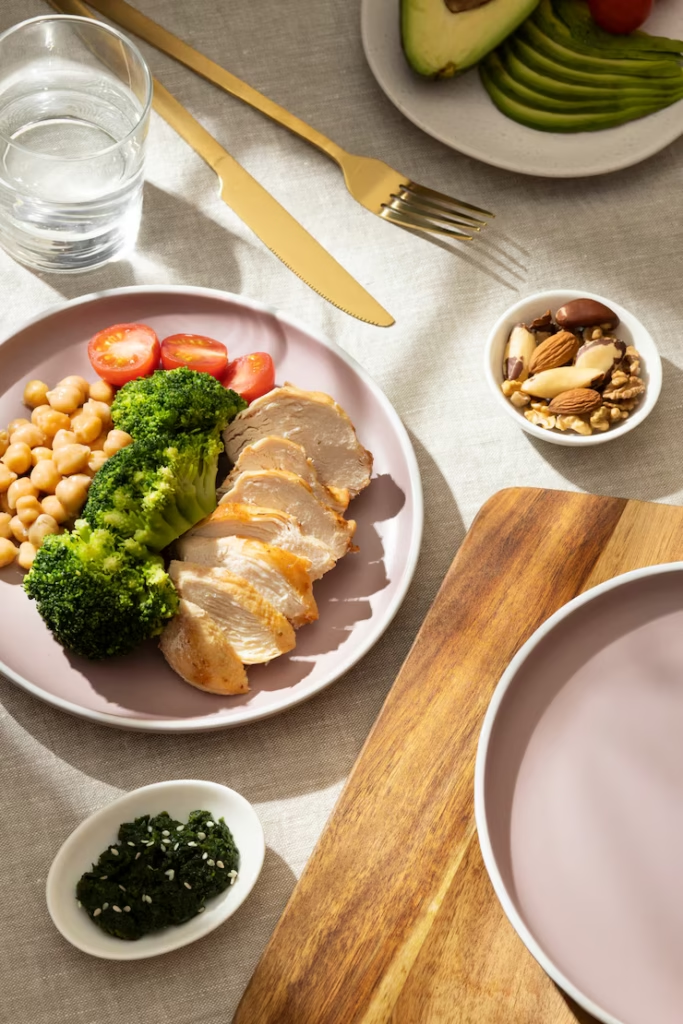
Choosing high-volume, low-calorie foods is a smart strategy when following a vegan weight loss meal plan. These foods allow you to eat satisfying portions without consuming too many calories, making it easier to stick to your goals without feeling deprived.
Vegetables like spinach, zucchini, mushrooms, cauliflower, and leafy greens are rich in water and fiber but low in calories. They help stretch your meals visually and physically, making you feel fuller on fewer calories. For example, swapping half your pasta with spiralized zucchini can dramatically lower calorie intake while still satisfying your appetite.
Fruits like berries, watermelon, and grapefruit are also great choices. They offer natural sweetness with fewer calories than processed snacks. When paired with lean plant proteins or whole grains, these high-volume foods make your vegan weight loss meal plan both effective and enjoyable. The key is to prioritize nutrient-dense options that fill you up without weighing you down.
Some foods let you eat large portions without a high calorie load—perfect for weight loss! These include:
Leafy greens (spinach, kale, arugula)
Cruciferous vegetables (broccoli, cauliflower, cabbage)
Zucchini, mushrooms, cucumbers, bell peppers
These fill your stomach and send satiety signals to your brain, helping you stay full longer.
Include Plant-Based Protein in Every Meal
Including plant-based protein in every meal is essential for a successful vegan weight loss meal plan. Protein supports muscle maintenance, keeps you fuller longer, and helps stabilize blood sugar—key factors in effective weight management.
Excellent plant-based protein sources include lentils, chickpeas, tofu, tempeh, seitan, edamame, quinoa, and beans. Incorporating these into your meals ensures you’re getting enough protein to support metabolism and reduce cravings. For example, a quinoa salad with black beans and avocado is both filling and protein-rich, ideal for lunch or dinner.
Breakfast can include protein-packed options like chia pudding, soy milk smoothies, or nut butter on whole-grain toast. Snacks such as roasted chickpeas or a handful of almonds also contribute to your daily protein intake. By consistently adding these proteins to your vegan weight loss meal plan, you’ll stay satisfied, reduce the temptation to snack unnecessarily, and fuel your body with the nutrients it needs to burn fat effectively.
Protein is essential for weight loss because it:
Keeps you full
Preserves lean muscle mass
Boosts metabolism through thermogenesis
Top vegan protein sources include:
Tofu and tempeh
Lentils, chickpeas, black beans
Quinoa
Edamame
Plant-based protein powders (look for clean labels)
Aim for 15–25 grams of protein per meal.
Limit Vegan “Cheese,” Oil, and High-Fat Foods
While plant-based diets are known for being healthy, not all vegan foods support weight loss—especially high-fat options like vegan cheeses, oils, and processed meat alternatives. If you’re following a vegan weight loss meal plan, it’s important to limit these calorie-dense foods.
Vegan cheese and creamy dressings often contain coconut oil or cashews, which are high in fat and calories. While healthy fats are essential, too much can quickly exceed your daily caloric needs and stall weight loss progress. Instead, choose lower-fat alternatives like hummus, tahini in moderation, or homemade nut-based spreads with portion control.
Oils—even olive or avocado oil—are 100% fat and pack 120 calories per tablespoon. Minimize added oils by baking, steaming, or using non-stick cookware. A successful vegan weight loss meal plan prioritizes whole, nutrient-dense foods over high-fat vegan substitutes to help you shed pounds while maintaining energy and nutrition.
While whole fats like avocado and nuts are healthy in moderation, it’s easy to overdo it. Many vegan cheeses and dressings are oil-based, which adds hundreds of calories quickly. Try alternatives like:
Hummus instead of mayo
Nutritional yeast instead of cheese
Roasting or air-frying instead of deep-frying
Stay Hydrated and Minimize Liquid Calories
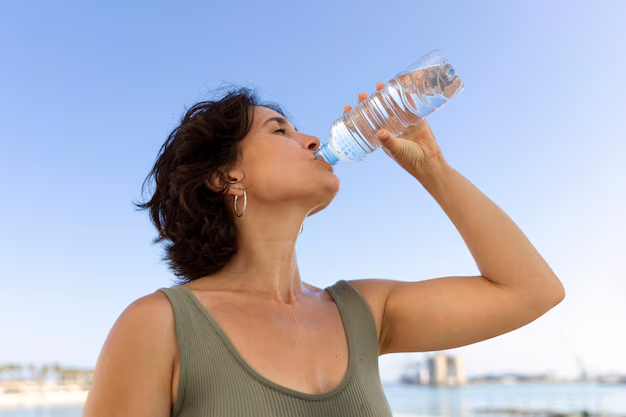
Hydration plays a vital role in weight loss and overall health. Drinking enough water each day helps control appetite, supports digestion, and keeps your metabolism functioning efficiently. If you’re following a vegan weight loss meal plan, prioritizing water over high-calorie beverages is essential.
Many people unknowingly consume hundreds of extra calories from sugary drinks like sodas, fruit juices, or even fancy vegan lattes. While these may be plant-based, they can spike blood sugar and contribute to weight gain. Instead, choose water, herbal teas, or infused water with lemon, mint, or cucumber to stay refreshed without added calories.
Also, sipping water before meals can help you feel fuller and avoid overeating. In a vegan weight loss meal plan, managing liquid calorie intake is just as important as food choices. Staying hydrated not only supports weight loss but also improves energy, focus, and skin health throughout your journey.
Water is essential for metabolism and helps flush out toxins. Often, we confuse thirst with hunger. Drink a glass of water before meals and aim for 2–3 liters per day.
Avoid:
Soda
Fruit juice
Sweetened plant-based milks
Stick to unsweetened almond or soy milk, herbal teas, or sparkling water.
Meal Prep and Plan Ahead
Meal prepping is a powerful strategy when following a vegan weight loss meal plan. Planning your meals in advance helps reduce impulsive eating, limits reliance on processed vegan snacks, and ensures that you always have nutritious, portion-controlled meals ready to go.
By cooking in batches and storing meals in containers, you save time and avoid the daily stress of deciding what to eat. This also makes it easier to track your calories and macros, which is key to staying aligned with your weight loss goals. Include a mix of whole grains, legumes, vegetables, and plant-based protein in each prep.
Consistency is crucial. Having a well-thought-out vegan weight loss meal plan keeps you from skipping meals or grabbing fast food when you’re short on time. It sets you up for success by eliminating guesswork, minimizing temptation, and supporting your journey toward a healthier, slimmer, and more energized body.
Failing to plan means planning to fail—especially on a weight loss journey. Meal prep ensures you:
Stay on track with your goals
Avoid impulsive eating
Save time during the week
Batch-cook grains and legumes, chop veggies, and pre-portion snacks like nuts or fruit.
Practice Mindful Eating

Mindful eating is a powerful yet often overlooked tool in any vegan weight loss meal plan. It involves paying full attention to the experience of eating—savoring each bite, recognizing hunger and fullness cues, and eliminating distractions like phones or TV.
When you eat mindfully, you’re more likely to stop eating when you’re satisfied instead of stuffed. This awareness prevents overeating, helps control portion sizes, and allows you to enjoy your food more—making your vegan meals feel more satisfying and less restrictive.
Incorporating mindful eating into your vegan weight loss meal plan can also help you identify emotional eating triggers. Many people eat out of boredom, stress, or habit. By tuning into your emotions and physical hunger, you can create a healthier relationship with food.
Even simple changes—like chewing slowly, putting your fork down between bites, and eating in a calm environment—can transform your eating habits. Mindful eating not only supports weight loss but also encourages long-term behavior change that reinforces your overall success on a plant-based diet.
Eating while watching TV or scrolling your phone leads to overeating. Practice mindfulness:
Chew slowly and savor each bite.
Stop when you’re 80% full.
Eat at a table, not in front of screens.
Mindful eating helps you reconnect with hunger cues and reduces binge eating.
Here’s your daily vegan weight loss meal plan presented in a clear table format with estimated calories and protein content:
| Meal | Ingredients | Calories | Protein |
|---|---|---|---|
| Breakfast | – 1/2 block firm tofu (scrambled) – 1/2 cup chopped veggies (onion, tomato, bell pepper, spinach) – 1 tsp turmeric, garlic powder, pepper – 1 slice whole-grain toast – 1 small apple | ~350 | 20g |
| Snack #1 | – 1 cup unsweetened almond milk – 1/2 banana – 1 scoop plant-based protein powder – 1 tbsp chia seeds – Handful of spinach – Ice | ~250 | 20g |
| Lunch | – 1/2 cup cooked chickpeas – Mixed greens, cherry tomatoes, cucumber, shredded carrots – 1 tbsp tahini-lemon dressing – 1/4 avocado – 1/2 cup cooked quinoa | ~450 | 18g |
| Snack #2 | – 1 cup baby carrots – 2 tbsp hummus | ~150 | 4g |
| Dinner | – 1/2 block tempeh, cubed – Broccoli, mushrooms, zucchini, bell pepper – 1 tsp sesame oil + low-sodium soy sauce – 3/4 cup cooked brown rice | ~500 | 25g |
🧠 Nutritional Tips For Healthy Vegan Weight Loss
Get Enough Protein: Protein is critical for preserving muscle while losing fat. Most people need 0.8–1.0 grams of protein per pound of body weight during weight loss. Prioritize high-protein plant foods and consider a quality vegan protein powder if needed.
Watch Out for Nutritional Gaps
Common deficiencies in vegan diets include:
Vitamin B12: Supplement or consume fortified foods
Iron: Pair iron-rich foods with vitamin C (e.g., lentils + lemon juice)
Omega-3s: Use flax seeds, chia seeds, or algae-based supplements
Calcium: Choose fortified plant milks and leafy greens
Avoid Starvation Diets: Cutting too many calories can backfire by slowing metabolism and increasing cravings. Aim for 1–2 pounds of weight loss per week—this is sustainable and healthy.
🔄 Exercise and Lifestyle Support
✅Combine Your Vegan Weight Loss Meal Plan with Strength Training: To enhance fat loss and preserve lean muscle, include resistance or weight training 3–4 times a week. This helps rev up your metabolism and complements the benefits of a nutrient-dense vegan weight loss meal plan.
🏃 Add Regular Cardio for Fat Burn: Incorporate aerobic exercises like brisk walking, cycling, swimming, or HIIT (High-Intensity Interval Training) at least 3–5 times per week. These activities increase calorie burn and support the effectiveness of your vegan weight loss meal plan.
🧘 Don’t Skip Stretching and Mobility Work: Daily stretching or yoga improves circulation, reduces injury risk, and enhances recovery. This ensures your body stays active and flexible while following your vegan weight loss meal plan.
😴 Prioritize Sleep and Recovery: Aim for 7–9 hours of quality sleep each night. Rest is crucial for hormone regulation, appetite control, and muscle repair—especially when you’re on a vegan weight loss meal plan.
🧠 Manage Stress for Better Results: Chronic stress can trigger cravings and slow progress. Use mindfulness techniques like meditation, journaling, or nature walks to stay mentally balanced while staying committed to your vegan weight loss meal plan.
🌱 Benefits Beyond Weight Loss
A vegan diet doesn’t just help you shed pounds—it transforms your overall health:
Reduces risk of heart disease and hypertension
Improves insulin sensitivity
Supports better digestion
Promotes clearer skin
May extend lifespan
✅ Conclusion
Achieving weight loss on a vegan diet is absolutely possible with the right approach. The key lies in finding balance—focusing on whole, nutrient-rich foods that nourish your body while supporting your fat loss goals. A well-planned vegan weight loss meal plan should include a mix of fiber, plant-based protein, and healthy fats.
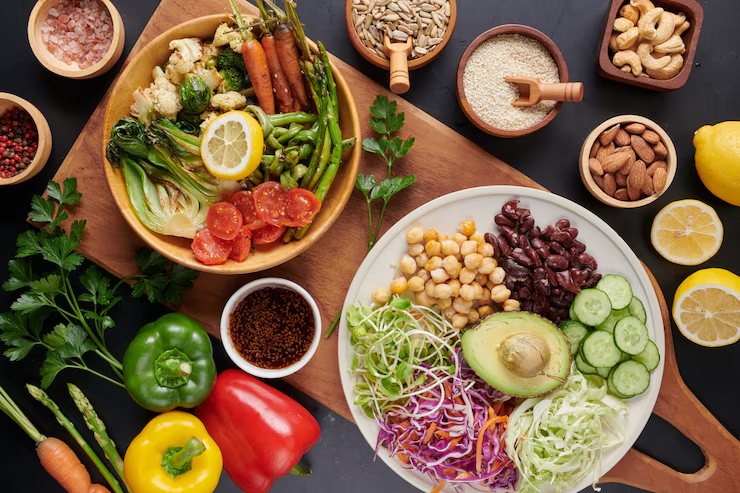
Preparation is essential. By planning your meals in advance and keeping nutritious snacks on hand, you reduce the temptation to reach for processed or high-calorie foods. Batch cooking grains, prepping vegetables, and portioning meals ahead of time can make your vegan journey easier and more enjoyable.
Most importantly, consistency will determine your success. You don’t need to rely on bland salads or go hungry. With a thoughtful vegan weight loss meal plan, you can enjoy a colorful variety of satisfying meals that are good for your body, your taste buds, and your long-term health.
FAQs
Q1. What is a vegan weight loss meal plan, and how does it work?
A vegan weight loss meal plan is a plant-based eating strategy focused on consuming whole, unprocessed foods that are low in calories but high in nutrients. It eliminates all animal products and includes foods like vegetables, fruits, legumes, whole grains, nuts, and seeds. This type of plan works by promoting satiety through fiber-rich meals, reducing overall calorie intake, and boosting metabolism naturally.
Q2. Is it hard to get enough protein on a vegan weight loss meal plan?
No, it’s completely achievable. A well-balanced vegan weight loss meal plan includes high-protein plant foods like tofu, tempeh, lentils, chickpeas, quinoa, and plant-based protein powders. These options help build and maintain muscle, which is essential for burning fat and keeping your metabolism active during weight loss.
Q3. How soon can I expect results from a vegan weight loss meal plan?
Results vary based on individual factors such as starting weight, activity level, and consistency. However, many people begin noticing changes—like reduced bloating, improved energy, and weight loss—within the first 2 to 4 weeks of following a consistent vegan weight loss meal plan.
Q4. Can I snack while on a vegan weight loss meal plan?
Yes, snacking is allowed and even encouraged to prevent overeating during meals. Choose nutrient-dense vegan snacks such as a handful of almonds, carrot sticks with hummus, or a green smoothie. Smart snacking supports satiety and stabilizes blood sugar levels, both important aspects of a vegan weight loss meal plan.
Q5. Are vegan weight loss meal plans suitable for everyone?
Most people can benefit from a vegan weight loss meal plan, but it’s important to ensure that it meets all nutritional needs. Those with specific medical conditions or nutrient deficiencies should consult a healthcare provider or registered dietitian before starting. A well-planned vegan diet can be safe, effective, and sustainable for weight loss.

